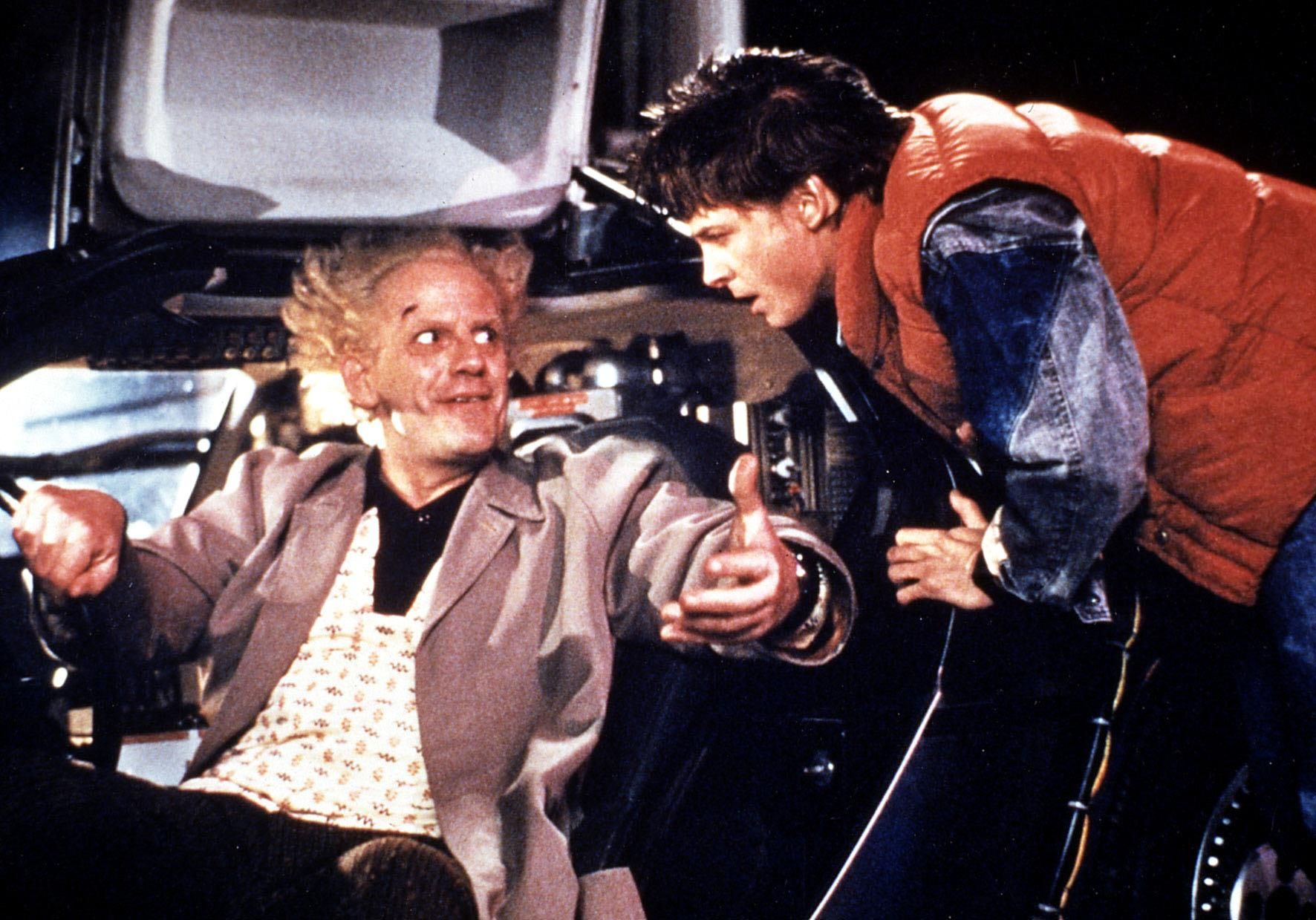Back to the Future turns 40. Doc Brown would never survive tech today
The 2025 version of Doc Brown would follow a different script, one written by venture capital rather than curiosity. He might look like Sam Altman

FilmPublicityArchive/United Archives via Getty Images
In Back to the Future, the invention that sets the plot in motion is pure chaos. It's not sleek. It's not user-tested. It's a plutonium-powered time machine built into a DeLorean by a lone eccentric scientist who claims to have spent his family fortune on a vision he had after slipping on a toilet.
That's the magic of 1985: Just a decade after Apple and Microsoft were born, the garage founder myth still felt not just alive, but inevitable.
Released 40 years ago Thursday, Back to the Future tapped directly into that cultural current. Doc Brown wasn’t a corporate figure or a university scientist. He was a cinematic projection of the idealized inventor: brilliant, reckless, and uncredentialed. A neighbor to Wozniak, Gates, and Jobs, tinkering away in his own garage just down the street. Not because he launched a company, but because he pursued a singular, strange idea all the way to the edge of what was possible.
Doc Brown doesn't build the time machine to sell it. He builds it because he wants to see the future. (He also mentions wanting to see who wins the next quarter-century of World Series championships, which seems to be as much a joke as a setup for the sequel.)
But once time travel actually happens, Doc, played by Christopher Lloyd, becomes obsessed with minimizing interference. He warns Michael J. Fox’s character Marty McFly again and again to be careful, not to change anything, to avoid disrupting the timeline. The future isn't something to be engineered or optimized. It's something fragile that deserves protection.
That idea — that the future is something you chase, stumble into, and try to disrupt as little as possible — is what animates Back to the Future. But the creator myth that served as the backdrop to technological innovation has been fundamentally transformed in the four decades since then.
The 2025 version of Doc Brown would follow an entirely different script, one written by venture capital rather than curiosity. He would have built governance safeguards not for the technology, but for his own tenure. He'd raise funding to build ”safe, beneficial time travel” while racing to deploy it before anyone else. And he might look a lot like Sam Altman.
Altman, who turned 40 this year — yes, the same age as Back to the Future — has become one of the most powerful figures in modern tech by doing what Doc never would: trying to control the future, rather than merely glimpse it. As CEO of OpenAI, Altman leads a company that began as a research collective with a utopian charter and is now reshaping everything from education to software development to national security.
Where Doc's motivations were intuitive and driven by wonder, Altman's are precise, strategic, and abstract. He talks about building artificial general intelligence to ”elevate humanity,” but the systems being built are optimized for scale, speed, and market dominance rather than human flourishing. The goal is no longer to visit the future. It's to version it. Quietly. Predictively. Profitably.
Another change? Instead of Doc stealing plutonium for innovation, 2025's version is already hiring retired Pentagon lieutenants to secure that sweet defense funding. The rogue scientist who diverted nuclear material from weapons has been replaced by the entrepreneur who builds the weapons themselves.
The film's deeper message is cautionary: be careful what you change. Doc learns this the hard way. By the end of the trilogy — spoiler alert — he decides to destroy the time machine entirely. “Your future hasn't been written yet,” Doc says. “No one's has. Your future is whatever you make it. So make it a good one.” It's a radical act of restraint. He chooses not to control what comes next, recognizing that some technologies are too powerful to exist.
That doesn’t happen often in tech today. When faced with existential questions about AI safety, executives offer congressional theater about guardrails. Then they return to Silicon Valley and step on the gas.
And yet, there are echoes of Back to the Future in today's tech world — especially in its hunger to shape what's next. Altman isn't alone in this. Elon Musk wants to colonize Mars. Marc Andreessen wants to accelerate everything. Peter Thiel wants to cheat death. These men aren't curious about the future. They want to own it.
And where Doc Brown saw time travel as a personal detour — one that risked unintended consequences — today's tech leaders see world-altering systems as inevitable. Alignment, safety, regulation — these are framed not as reasons to pause, but as roadblocks to be managed.
What makes this comparison sting is that it's not just a shift in technology. It's a shift in philosophy. Back to the Future is, at its heart, about humility in the face of time. It's a story about realizing how fragile cause and effect really are, and how dangerous it can be to tamper with things you don't fully understand. Today's tech mythology isn't built on that kind of humility. It's built on scale. On optimization. On belief in a better future that can be designed.
In other words, Doc Brown wanted to visit the future. Sam Altman wants to become the future.
